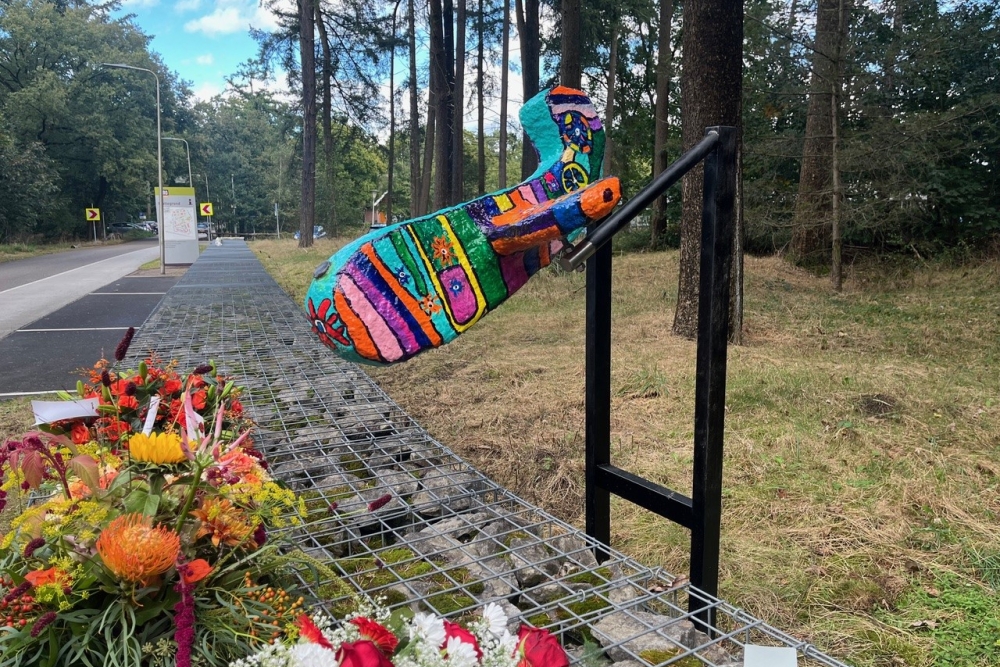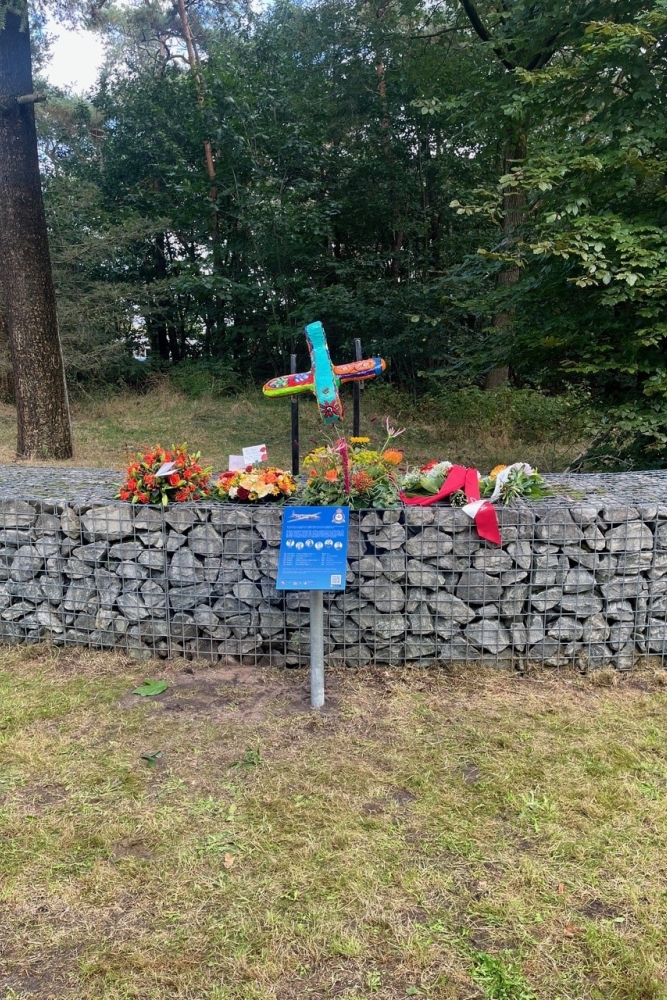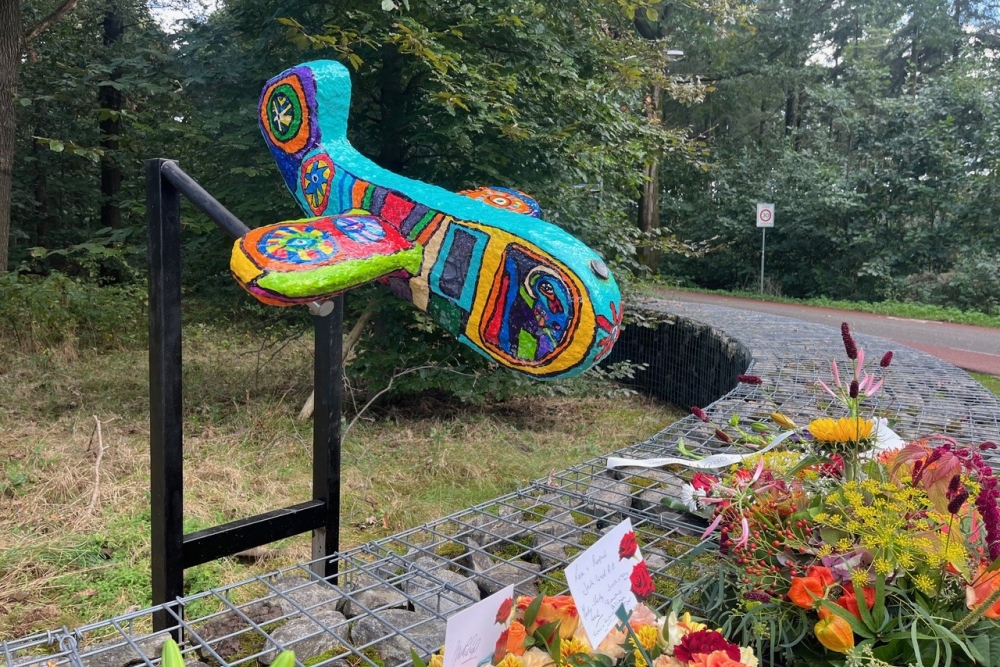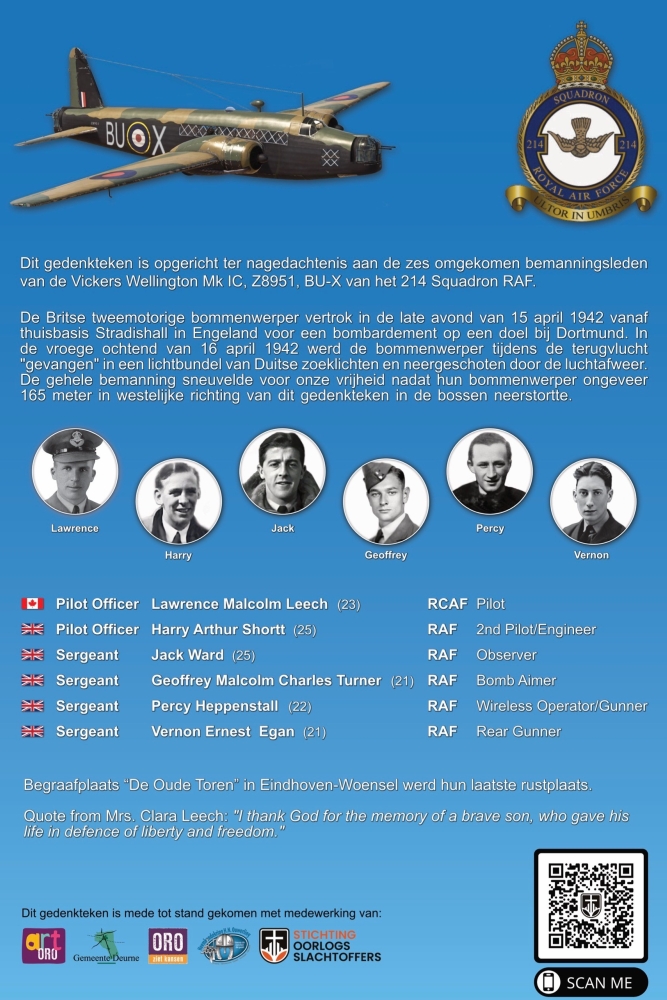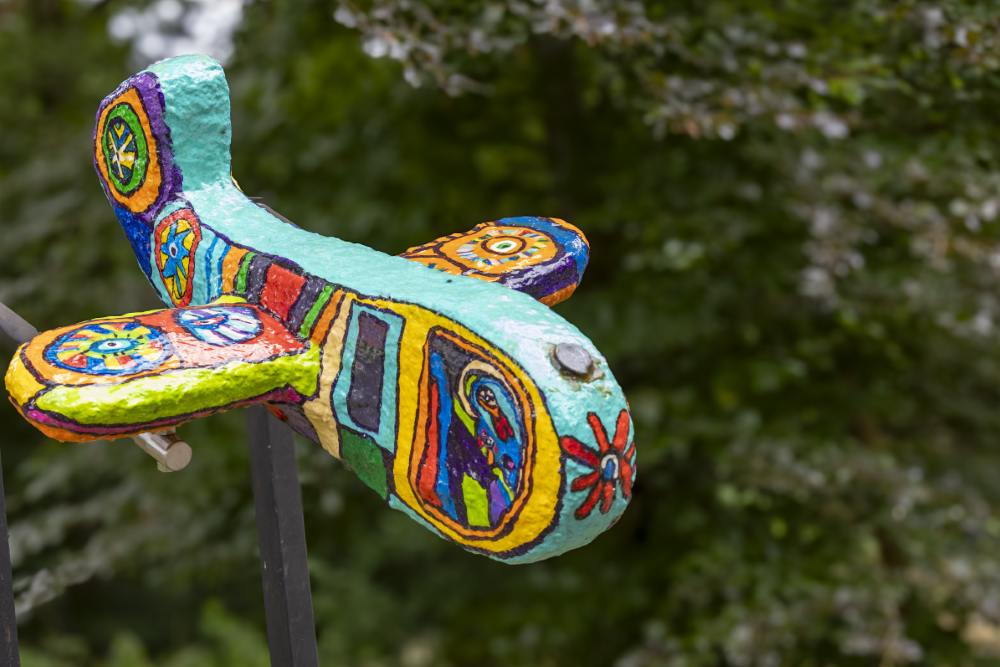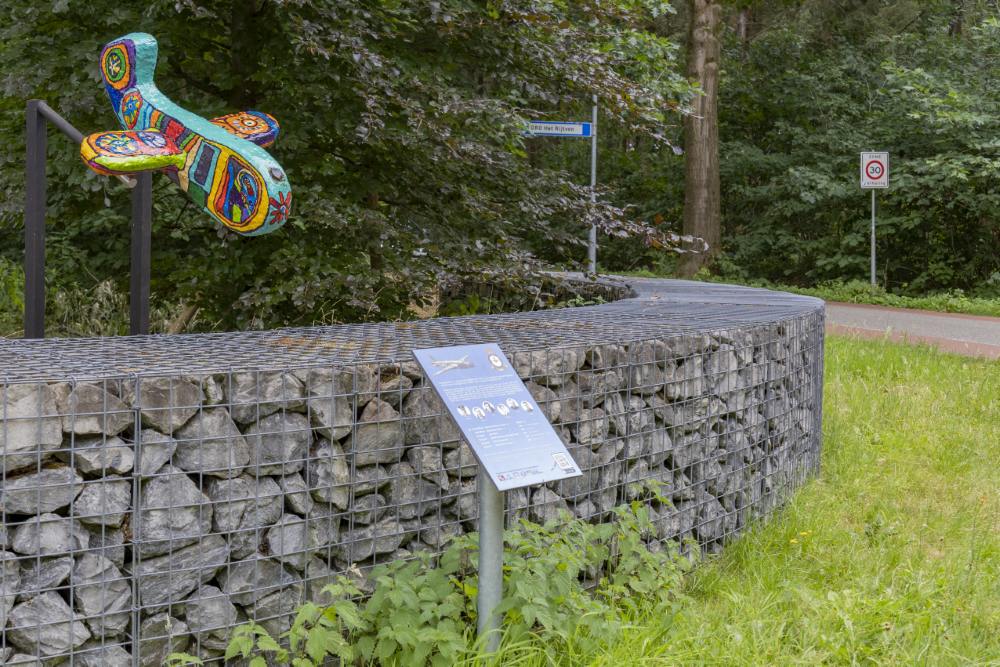Crash Site Vickers Wellington MK 1C Z8951 BU-X
About 165 metres from this spot, a British Wellington bomber crashed in the early morning of 16 April 1942.
The twin-engined Wellington had taken off from home base Stradishall in England in the late evening of 15 April 1942 for a bombing raid on a target near Dortmund. In the early morning of 16 April 1942, on the return flight, the bomber was ‘caught’ in a beam of German searchlights and shot down by anti-aircraft fire. The entire crew lost their lives in the process after their aircraft crashed in the woods about 165 metres to the west of this memorial.
The crew:
Pilot Officer Lawrence Malcolm Leech (23) RCAF, Pilot
Pilot Officer Harry Arthur Shortt (25) RAF, 2nd Pilot/Engineer
Sergeant Jack Ward (25) RAF, Observer
Sergeant Geoffrey Malcolm Charles Turner (21) RAF, Bomb Aimer
Sergeant Percy Heppenstall (22) RAF, Wireless Operator Gunner
Sergeant Vernon Ernest Egan (21) RAF, Rear Gunner
is buried at ‘De Oude Toren’ cemetery in Eindhoven-Woensel.
The memorial, which has the shape of an aircraft, was designed and made by clients of Art'ORO, which is part of the ORO Foundation, which stands for Othmarus Rijtven Organisation. This foundation specialises in the care, support and guidance of people of all ages with intellectual and developmental disabilities.
Although people with a mental disability or mental illness were not deliberately murdered during World War II in the Netherlands, many people from the disability and mental health care sector died during World War II. Mainly due to lack of staff, food, lack of space and neglect because they were seen as inferior Untermenschen (subhumans) by the German occupiers. Even before the outbreak of World War II, hundreds of thousands of people residing in institutions in Germany were compulsorily sterilised and even murdered in gas chambers or by deliberate starvation during World War II.
The artwork is more than a symbol. It is a creation of studio Art'ORO, in which many artists have put their hearts and souls. Each part tells a story, intertwined with the history of this place and the people who made it. What makes this artwork so special is the cockpit light incorporated into the ‘plane’, a light found nearby. The light comes from the plane that crashed during the war. It is a tangible reminder of the tragedy of that time, but also of the hope and freedom that was fought for. The plane symbolises the journey that many were never able to complete, and the light in the cockpit reminds us of their courage and sacrifice.
This not only honours the heroes who fought with weapons, but also those who became victims of war without any protection, due to their vulnerability. This artwork is a tribute to them all, to those who gave their lives for our freedom, and to those who never got to experience that same freedom.
Do you have more information about this location? Inform us!
Source
- Text: TracesOfWar & Stichting Oorlogsslachtoffers
- Photos: Richard Schoutissen Stichting Oorlogsslachtoffers (1, 2, 3, 4), Martin Damen (5, 6)
- - Oorlogsmonument "Het Rijtven" | Stichting Oorlogsslachtoffers
Nearby
Museum
Point of interest
- Cycling route Death Valley De Peel - A treacherous murder (#30) - Vlierden
- Cycling route Death Valley De Peel - Maria van Otterdijk (#6) - Deurne
- House 'The Roman' - Deurne
Monument
- War Memorial Sint-Willibrordus Church - Deurne
- Commemorative Sign 27 Death Valley De Peel - Ommel
- War Memorial Zeilberg - Zeilberg
Cemetery
Remembrance Stone
- Stumbling Stone Koningsplein 10 - Asten
- Memorial stones Koppens Family - Helmond
- Memorial Stone Coppel Family - Helmond
Fortification
- Foundation Tank Barrier Deurne - Deurne
- Trenches Klotterpeel - De Rips
- Casemate Peel Raamstelling S-K50 - De Rips
